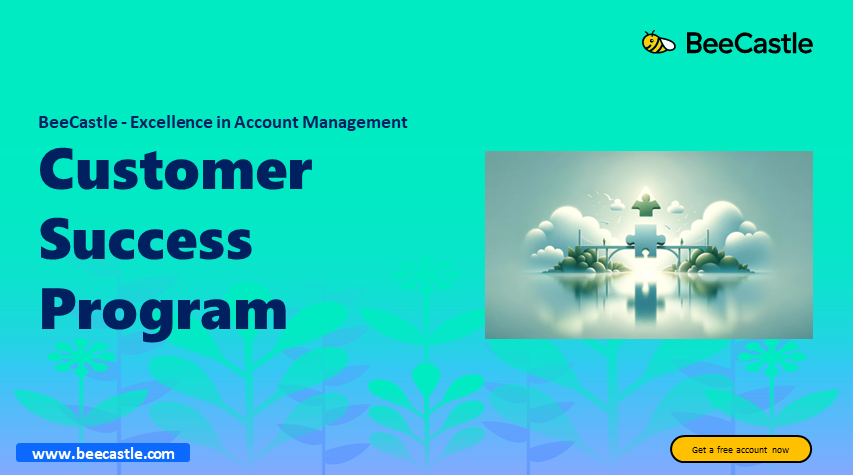

Building a Customer Success Program for Your MSP
In the fast-paced world of managed service providers (MSPs), account managers like yourself juggle a million priorities. You’re constantly on the go, bringing in new clients, managing existing accounts, and ensuring smooth service delivery. But here’s the secret weapon that often gets overlooked: a robust customer success program.Think of it this way: a customer success program isn’t just about keeping clients from churning (although that’s definitely a perk!). It’s about transforming them into loyal advocates who rave about your services to their network. This translates to not only higher retention rates but also opens doors for upselling and expansion opportunities – a win-win for everyone involved. Here’s how you, as an account manager, can champion the creation and implementation of a customer success program that turns satisfied clients into loyal fans:

1. From Reactive to Proactive: Shift Your Mindset
Let’s be honest, many MSPs fall into a reactive mode. A client calls with a problem, you fix it – that’s the cycle, right? While reactive support is crucial, a customer success program flips the script. The focus becomes proactively understanding client needs, anticipating challenges before they arise, and ensuring they’re maximizing the benefits of your services.
Here’s how this mindset shift impacts your role:
- Deeper Client Relationships: Instead of being solely transactional, you become a trusted advisor, proactively identifying areas where your services can further optimize their IT infrastructure and business processes.
- Reduced Client Churn: By addressing issues before they snowball, you foster a sense of trust and satisfaction, leading to higher retention rates.
- Increased Upsell Opportunities: When clients see the tangible value you deliver, they’re more receptive to exploring additional services that address their evolving needs.
2. Map the Client Journey: A Personalized Approach
Not all clients are created equal. They come in different shapes and sizes, with unique IT environments and specific business goals. To cater to this diversity, segment your clients based on factors like industry, company size, and pain points. Then, for each segment, map out a personalized customer journey. This journey should encompass key touchpoints throughout their lifecycle with your MSP, starting from the initial onboarding all the way to ongoing support and renewal. Here are some elements to consider:
- Onboarding: A smooth onboarding experience sets the tone for the entire relationship. Make it comprehensive, informative, and tailored to their specific needs.
- Regular Check-ins: Schedule regular touchpoints, whether through calls, emails, or in-person meetings, to proactively assess their satisfaction and identify any potential roadblocks they might be facing.
- Educational Resources: Equip your clients with the knowledge to become active participants in their IT journey. This could include self-service portals, curated knowledge base articles, or educational webinars.
- Feedback Mechanisms: Build feedback loops into your communication channels. Encourage clients to share their thoughts and concerns, allowing you to identify areas for improvement and continuously enhance your service delivery.
3. Build Your Client Success Team: Who Owns Success?
The ideal scenario is to have dedicated customer success managers (CSMs) who act as champions for your clients within your MSP. CSMs specialize in building relationships, understanding client needs, and proactively ensuring they’re getting the most out of your services.
However, we understand that not all MSPs have the resources for a dedicated CSM team. Don’t fret! You can still build a strong customer success program by leveraging existing resources. Here are some strategies:
- Empower Service Delivery Managers (SDMs): If your MSP has SDMs who manage service delivery, consider training them on customer success best practices. This empowers them to go beyond technical expertise and become trusted advisors for your clients.
- Collaboration is Key: Foster a collaborative environment where account managers and the technical team work together. Account managers provide insights into client needs, while the technical team ensures those needs are translated into effective solutions.
4. Communication is Key: Building Trust and Transparency
Let’s face it, communication breakdowns are a recipe for client dissatisfaction. Here’s how to establish clear communication channels and foster trust and transparency:
- Define Communication Channels: Determine the preferred communication methods for your clients, whether it’s email, phone calls, or a ticketing system. Ensure consistent and timely responses through these channels.
- Monthly Reports: Deliver regular reports that provide clients with insights into their IT health, security posture, and the overall effectiveness of your services. This transparency fosters trust and strengthens the partnership.
- Quarterly Business Reviews (QBRs): Schedule regular QBRs to discuss client goals, progress on initiatives, and address any concerns they might have.